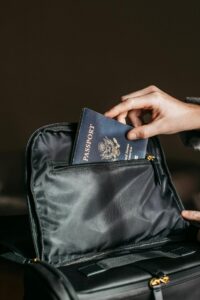So you’ve finally decided to move to America – congratulations. Moving to America is a big deal, irrespective of where you’re coming from or the immigration route you choose. But today, we’ve chosen to focus our attention on the VAWA immigration route.
Why is it becoming so popular, and how does it differ from other popular immigration channels?
Firstly, let’s clarify that migrating to America can either be simple or complicated, irrespective of the route you choose. It boils down to who’s helping you handle it and how experienced they are. The experts at the Coleman Law Group have all the right experience to help you handle all paths of immigration, especially VAWA immigration.
What is VAWA Immigration?
One of the most popular ways to come to America is through direct relations. If you have a direct relation (say spouse, parent, or child) that’s already an American citizen or permanent resident, they can bring you to the United States. But what happens when they suddenly change and begin to maltreat you? Do you continue to endure the mistreatment or move back to your country of origin? This is where the VAWA immigration law comes in.
Firstly, VAWA stands for the Violence Against Women Act. This act, signed into law in 1994, exists to help victims of abuse find safety in the United States. If your host in the United States suddenly begins to abuse you, you can apply for an American visa under this act.
It’s important to point out that although the name VAWA contains women, it is not limited to only women. Anybody can apply for American citizenship under it, irrespective of gender or age. The only criteria is that you’re passing through abuse from a direct relation who’s a United States citizen or permanent resident.
If, after applying under this law, you’re found eligible, you’ll qualify for a U.S. green card. But how does this visa route differ from other available routes? Let’s find out.
Differentiating VAWA Immigration From Other Types of Immigration
As expected, there are quite a number of immigration routes into the United States targeting victims of violence and domestic abuse. Let’s compare a few of them with VAWA:
VAWA vs. U-Visa
Let’s start with the very popular one, the U-Visa, also known as the non-immigrant status. This immigration type is designed to help victims of certain crimes gain admission into the United States. It does this on the assumption that such victims must have suffered mental or physical harm and thus need rehabilitation. The said crimes include sexual assault, domestic violence, trafficking, felony assault, and kidnapping.
The victims also get admitted into the United States because of the role they’ll play in helping law enforcement agencies investigate such crimes. This means that such victims have not only admitted knowledge of the crime, but they’ve also agreed to help in the investigation and prosecution of suspects.
The Differences
The U-Visa resembles VAWA in many ways, but they are not the same. Applicants should understand the difference because it’ll help them know the best option for their case. That said, here are the differences:
- Unlike the VAWA immigration path, there’s a yearly cap on the number of people that can enter the United States through the U-Visa route. The limit is 10,000 people per year, and this limit is usually met in the first few months of the year. If you’re applying after this limit has been met, you’ll be placed on a waitlist until the next cycle.
- While both visa paths require self-petitioning, the VAWA application process is usually faster because of the nature of abuse involved.
- The VAWA immigration law requires petitioners to be direct relations to U.S. citizens or permanent residents to qualify. The U-visa does not require these things. Instead, it requires applicants to guarantee the authorities that they can provide useful information that can lead to the prosecution of their abuser.
VAWA Vs. T-Visa
The T-Visa is designed to provide immigration relief for survivors of sex or labor trafficking. Depending on the nature of their abuse, human trafficking survivors may be eligible for lawful status. Such survivors are also typically eligible for employment authorization and a path to permanent U.S. residency. This visa also allows victims of human trafficking to remain in the United States because of the role they’ll play in investigations. The information they’ll provide law enforcement agencies will be helpful for arresting and prosecuting the people involved in the trafficking.
However, if they provide such information, they’ll need protection; hence, the visa. The T-Visa is similar to the U-Visa in many areas. But let’s review its differences with the VAWA immigration path.
The Differences
- Again, there’s a yearly cap on the number of T visas that can be issued yearly. The law stipulates that no more than 5,000 T visas can be granted in each fiscal year.
- The path for applying for the T-Visa is also typically slower than the process involved in applying for VAWA immigration.
- During the VAWA immigration application process, the USCIS typically require many supporting documents. The required documents and information are way less under the T-Visa application system.
Making the Best Decision
Victims of domestic abuse may be eligible for any of the three visas we’ve reviewed so far. All three of them provide similar forms of relief since they put applicants on the path to permanent residency in the United States. However, despite their similarities, they are still pretty different.
Thus, it’s important to learn their characteristics and your eligibility for each before choosing one. There’s no better way to make a decision than with the guidance of experienced immigration lawyers. Such lawyers can weigh your chances and recommend the best path for you.
The Coleman Law Group Can Help You
At the Coleman Law Group, we have experienced VAWA immigration attorneys who can offer customized advice and recommendations based on your case. We offer representation where necessary. Our goal is to make the visa application process smooth and seamless. Contact us today to learn more about how we can help you!



